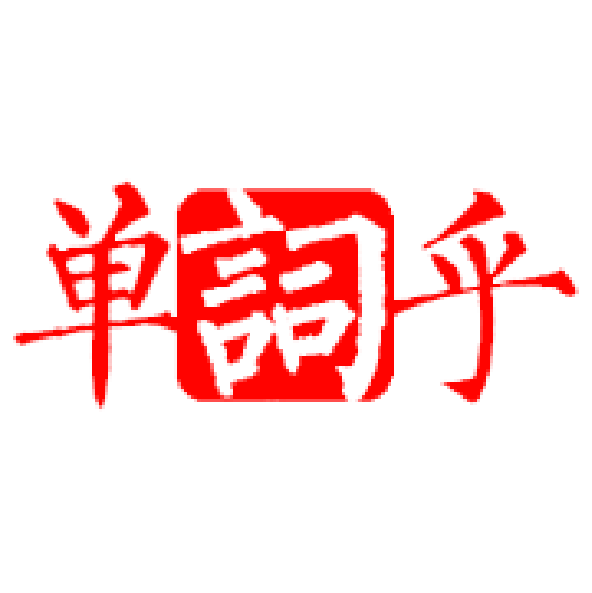mug
mug汉语翻译
vt. 给...拍照, 攻击, 苦读
vi. 拼命用功
【法】 抢劫, 拍照存档; 罪犯, 暴徒, 嫌疑犯照片
mug词型变化
mug词意辨析
cup, glass, mug
这3个名词均可表示“杯,杯子”之意。cup: 指有柄,用来饮茶或咖啡等的瓷杯。
glass: 指玻璃制的杯子,用来盛酒和牛奶等东西。
mug: 通常指周边垂直,不用茶托的有柄大瓷杯或大金属杯。
mug英语解释
名词 mug:
- the quantity that can be held in a mug同义词:mugful
- a person who is gullible and easy to take advantage of同义词:chump, fool, gull, mark, patsy, fall guy, sucker, soft touch
- the human face (`kisser' and `smiler' and `mug' are informal terms for `face' and `phiz' is British)同义词:countenance, physiognomy, phiz, visage, kisser, smiler
- with handle and usually cylindrical
动词 mug:
- rob at gunpoint or with the threat of violence
mug例句
- He has a mug of cocoa before bed.他临睡前喝一缸子可可。
- This mug has a chip in it.这个缸子上有个缺口。
- He made a mug of cocoa for me.他给我冲了杯可可饮料。
- He asked me to make him a mug of coffee.他要我给他弄杯咖啡。
mug详细解释
mug
n.(名词)A heavy cylindrical drinking cup usually having a handle.杯:一种较沉的筒状饮杯,通常有把手The amount that such a cup can hold.一杯的量:一个这样的杯子可容之量
来源:[Perhaps of Scandinavian origin] [可能起源于斯堪的纳维亚语]
mug
mug 2
n.(名词)Informal 【非正式用语】 The human face.See Synonyms at face 人脸参见 faceThe area of the human mouth, chin, and jaw.人的嘴、下巴和颏的部位A grimace.鬼脸A mug shot.面部照片A thug; a hoodlum.恶棍,暴徒Chiefly British A victim or dupe.【多用于英国】 受害者,傀儡v.(动词)mugged,mug.ging,mugs v.tr.(及物动词)Informal To photograph (a person`s face) for police files.【非正式用语】 照像:为警局存档之用而(给一个人的脸部)拍照To threaten or assault (a person) with the intent to rob.袭击:为偷窃而威胁或殴打某人v.intr.(不及物动词)To make exaggerated facial expressions, especially for humorous effect.做鬼脸:做脸部夸张的表情,尤指逗乐时做鬼脸
来源:Probably from mug [possibly in allusion to mugs decorated with grotesque faces] 可能源自 mug [可能暗指用鬼脸做装饰的大杯子]
<注释>Various senses of the termmug illustrate uses and abuses of the human face. One use to which the face was put in the 8th century was as a form of decoration for cups or mugs.It is probably from these grotesque and striking facesthatmug came to mean .face,. the word in this sense being first recorded in 708.The next recorded development ofmug is its use as a verb in 88 in the sense .to strike in the face.. This verb has developed the sense .to attack and rob,.all too familiar to urban dwellers.The face`s role in conveying emotion explains the development of the verb sense .to make faces, grimace,.recorded first in 855.Another sense of the noun, .photograph or portrait of the face,.found earliest in 887,is an obvious development, although it is ironic that those who mug criminally end up in a mug book.The use of the face to express affection explains the sense .to kiss, fondle,.recorded first in Australia in 890.mug 的各种不同的含义显示了对人脸的使用和滥用。 其中一个用途是在8世纪作为杯子上的装饰图案。也许正是由于这些鬼脸和令人惊讶的脸谱,mug 开始意指.脸., 该词有此意义最先记录于708年。此后,另一种有记录mug 的用法作为动词的意思是.打击脸部。. 这个动词以后又发展为.袭击和抢劫.之意,这对城镇居民来说真是太熟悉了。脸在表达感情时所扮演的脸色可以解释该动词的延伸义.做鬼脸,做怪像.,该意思最早记录于855年。该名词的另一个意思:.脸部的像片或画像.最早见于887年,虽然具有讽刺意味的是那些抢劫犯最终将被警方拍照存档,但这仍然是一个显而易见的进步。运用脸部来表达情爱意指.吻,抚爱.,此用法最早于890年在澳大利亚有记载



















